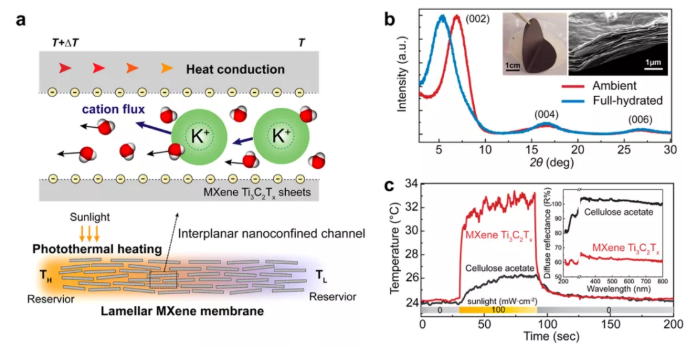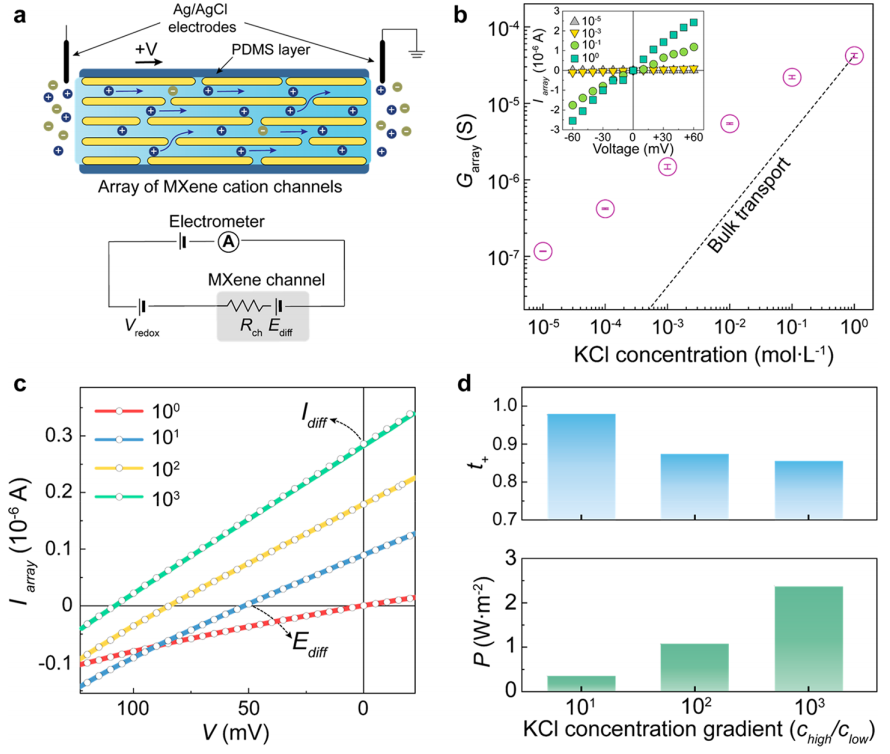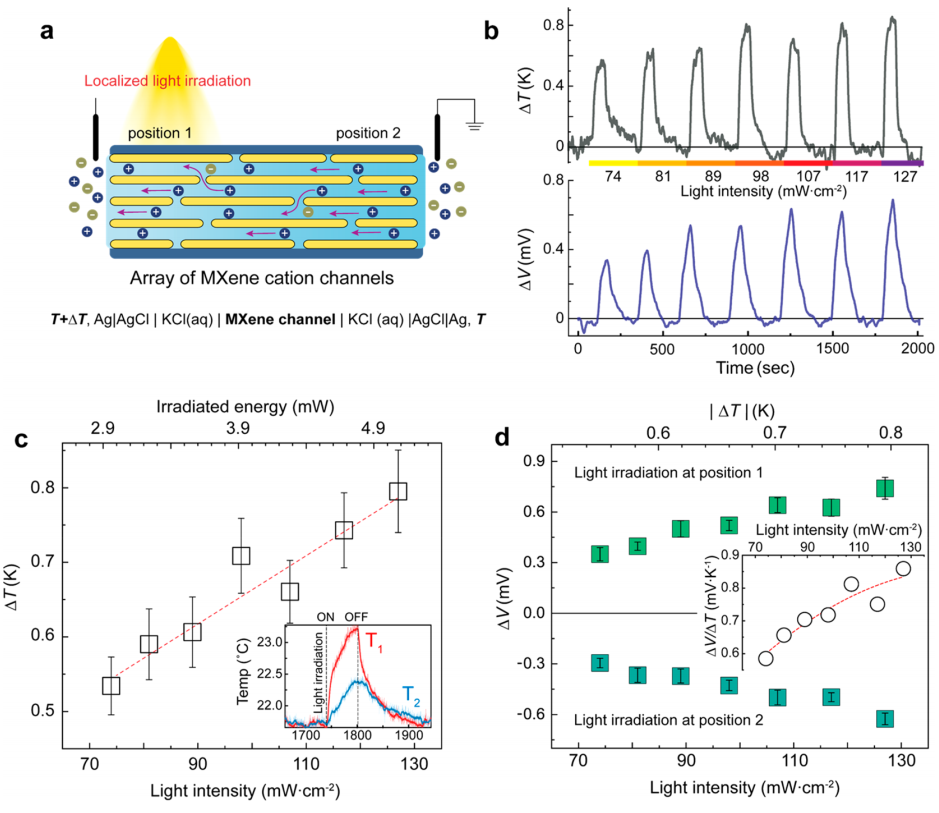Photoelectric response of MXene restricted ion channel
QQ Academic Group: 1092348845
Detailed
With the latest developments in nanomanufacturing technology and growing interest in biologically inspired smart nanochannels, the design and manufacturing of man-made nanochannels has made significant progress. Among various types of biological ion channels, the thermosensitive transient receptor potential (thermoTRP) cation channel has attracted great attention in nanofluid applications such as biomimetic thermometers and thermal energy conversion and collection.
Recently, intrinsic nanochannels with confined pores and a large amount of surface charge have revealed their potential applications in various external stimulus-responsive ion sensing systems. When the confined space of the nanochannel is as small as the length of the Debye shield, an electric double layer (EDL) composed mainly of surface charges and counterions can be established in the nano confined channel, so that it can respond to external stimuli Carry out selective charge ion transport. In particular, under a chemical potential driven by temperature or salt concentration, this charge-selective ion transport can be used as a driving force for generating an electric potential.
Focusing on the nanoporous sheet structure composed of multilayer two-dimensional (2D) nanosheets, this article explores the cation channels of metal carbide and nitride (MXene) layered membranes in order to seek to imitate the thermal process of thermoTRP channels. In this article, combined with the inherent light-to-heat conversion properties of MXene material, the ion transport based on the MXene channel under the temperature gradient generated by light-driven heating is studied. Even under the slight temperature difference below 1 K, the MXene channel has a very sensitive thermoelectric response. It is found that this non-isothermal voltage increases with the increase of channel cation permeation selectivity, which is related to the ion concentration or pH of the permeate. In addition, the MXene ion channel shows a stable and reversible response to temperature changes under light.

Figure 1. Photothermal response ion channel. (a) Transverse photothermal voltage is generated across the layered Ti3C2Tx film under light. Under a light-driven temperature gradient, hydrated cations and water molecules show directional heat permeation transmission from the cold side to the hot side. (b) X-ray diffraction surface spacing of layered Ti3C2Tx. The insets are the optical image of MXene film and the SEM image of its cross section. (c) Photothermal conversion of MXene film under light. Provide about 8mW of light to the MXene film. The illustrations show the diffuse reflectance of dried MXene and cellulose acetate films, respectively.

Figure 2. Cation selective ion transport. (a) Schematic diagram of experimental device. The PDMS-encapsulated MXene layered membrane provides a series of MXene cation channels while avoiding possible thermal evaporation effects. The equivalent circuit diagram is shown in the illustration. (b) Ion transport controlled by surface charge. The inset shows the I-V curve at different KCl concentrations. (c) I-V curve under a concentration gradient of neutral pH salinity. (d) The number of cations transferred through the MXene channel and the maximum permeation power density evaluated by the open circuit voltage and short circuit current under different salt concentration gradients.

Figure 3. Photothermal ion response of light control. (a) Schematic diagram of experimental device. The MXene ion channel shows a thermal penetration ion current from the unirradiated surface to the irradiated surface. (b) Time-varying temperature gradient and photothermal voltage under position 1 irradiation. Illuminate for 60 s at each light intensity. (c) The temperature gradient increases with increasing light intensity. The inset shows the temperature change of positions 1 and 2 over time under the light of 127 mW·cm-2. (d) Photothermal voltage when the light intensity increases under different irradiation positions. The illustration shows the ion Seebeck coefficient calculated from the photothermal voltage, regardless of the irradiation position.

Figure 4. Photothermal ion response regulated by electrolyte. (a) KCl concentration-dependent photothermoelectric response. (b,c) Photothermoelectric response and its periodic stability under the KCl concentration gradient.
Related literature: Photothermoelectric Response ofTi3C2Tx MXene Confined Ion Channels. ACS Nano 2020, 14, 9042−9049
Information source: Nano functional materials
This information is from the Internet for academic exchanges. If there is any infringement, please contact us and delete it immediately
- Previous: Application of Mxene m
- Next: MXene breakthrough: Na


 mxene academic
mxene academic
